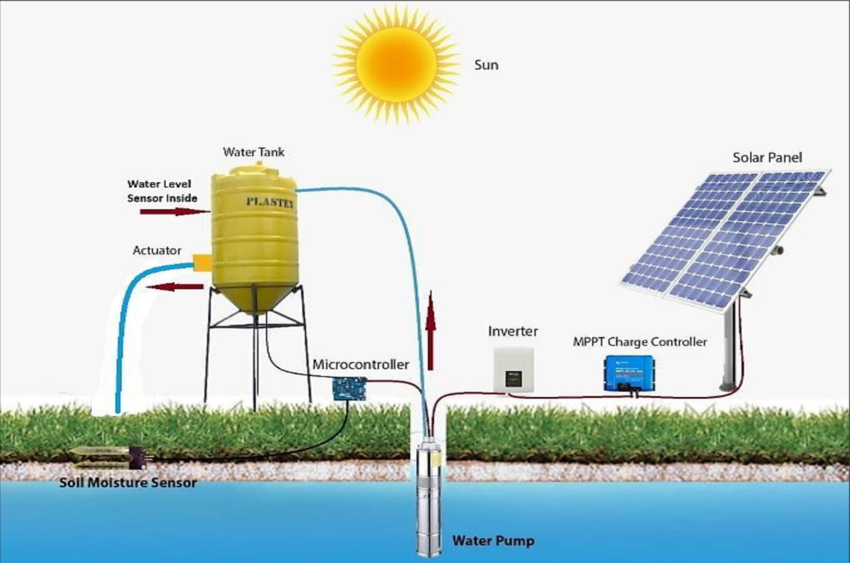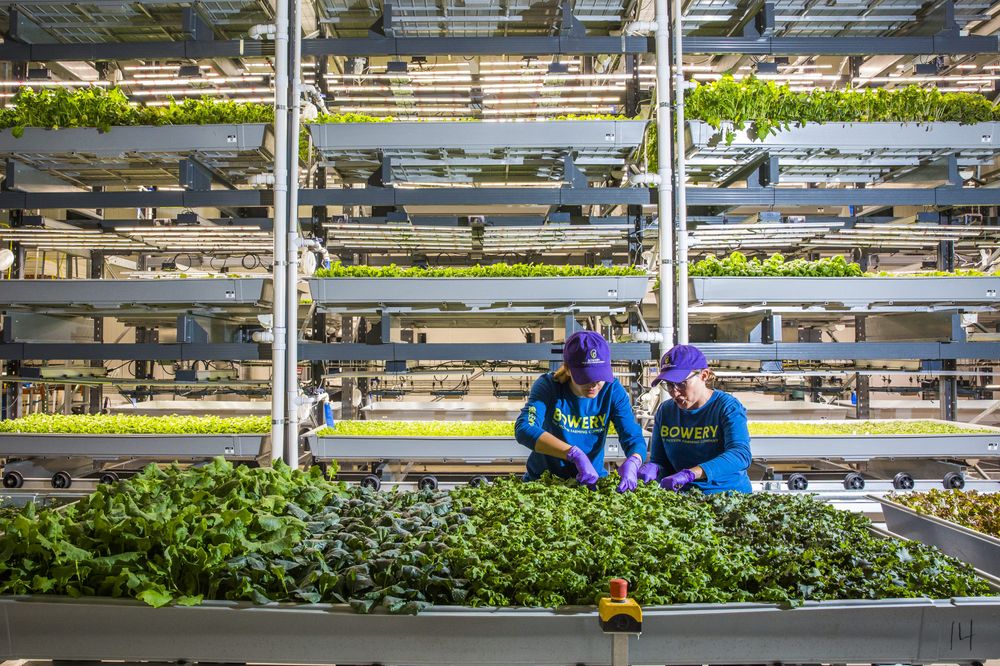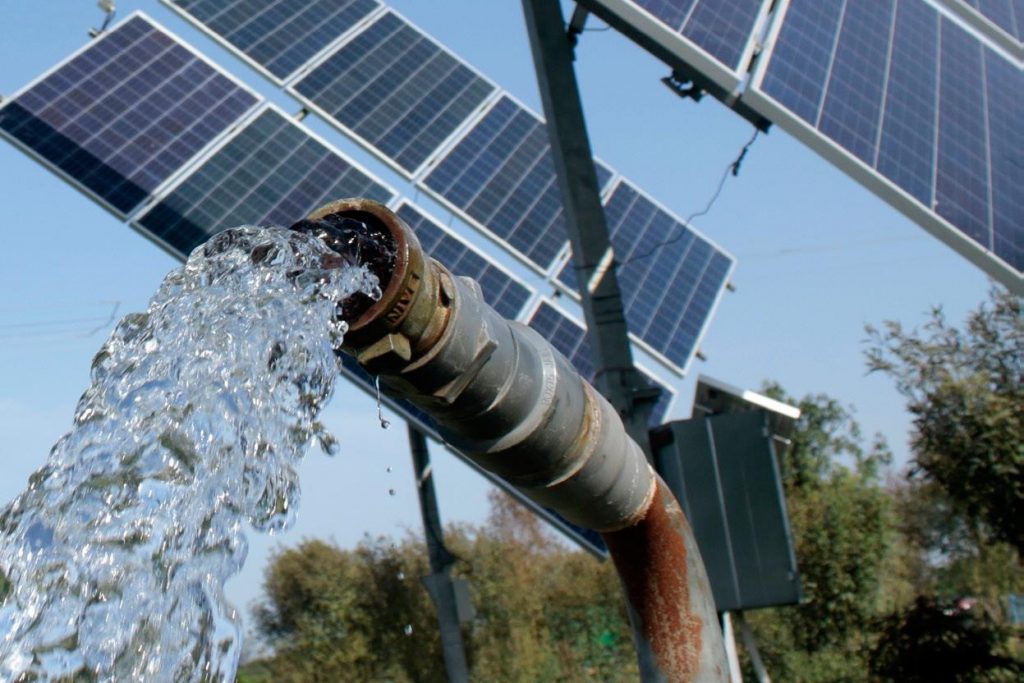Solar irrigation systems are redefining the way we approach traditional farming methods, harnessing the power of the sun to enable farmers to irrigate their crops in a more environmentally friendly and cost-effective manner.
Gone are the days of relying solely on the grid – or expensive, polluting diesel - to power irrigation systems. Solar-powered systems not only reduce carbon emissions but also cut down on energy costs: a win-win situation for farmers and the planet. By converting sunlight into electricity to run pumps and irrigation systems, solar technology is providing an innovative solution to the age-old problem of water management in agriculture.
Not only are these systems environmentally friendly, they are also highly efficient. Incorporating advanced technology and automation, solar irrigation systems optimise water usage, delivering precise amounts of water to crops based on their specific needs.
In this article, we delve deeper into how solar irrigation systems are benefitting Australian agriculture, along with potential challenges and opportunities for farmers.
What do we mean by solar irrigation?
Put simply, solar irrigation means any irrigation system which is powered by solar energy, typically on a farm. Systems are comprised of four components; the solar PV panels, a pump, a reservoir and an irrigation system. Although regarded as rudimentary when first introduced, solar irrigation systems have come a long way in recent years - you can now even harness the power of the internet to monitor and control your solar water pump from an app on your phone!
This kind of system is increasingly being used by farmers as it is cheaper, cleaner, quieter and more environmentally friendly than diesel pump alternatives.
The benefits of solar irrigation systems
Solar irrigation systems are a fantastic choice for farmers, offering a host of valuable benefits which fall into three categories.
- They're cheaper to run. Unlike traditional irrigation systems that rely on fossil fuels or grid electricity, solar irrigation systems harness the power of the sun – an abundant and free resource. While the initial investment may be higher compared to conventional systems, the ongoing savings are substantial.
- They're clean and sustainable. This means farmers can reduce their reliance on non-renewable energy sources, shrink the carbon footprint of their business and enjoy cleaner air at the same time.
- They're smart and water efficient. Equipped with advanced sensors and controllers, these systems continuously monitor soil moisture levels and weather conditions in real-time. This data is then used to calculate the precise amount of water needed for each crop, ensuring efficient distribution and minimizing waste.
How solar irrigation systems work

Figure by Matthew Kwofie (2023). Utilization of Solar Energy for Water Pumping in Agriculture.
Solar irrigation systems operate on the principle of converting sunlight into electricity through photovoltaic (PV) panels. These panels consist of semiconductor materials that absorb photons from the sun and generate a direct current (DC) of electricity. The DC electricity is then converted into alternating current (AC) using inverters, which is suitable for powering pumps and irrigation systems.
The size and capacity of the PV panels and inverters depend on the specific requirements of each farm. Factors such as the size of the land, water demand, and geographical location all play a role in determining the optimal system size. In general, larger farms with higher water requirements would require larger PV arrays and more powerful inverters.
To ensure efficient operation, solar irrigation systems are equipped with intelligent controllers and sensors. These devices monitor various parameters, including soil moisture levels, ambient temperature, solar radiation, and weather forecasts. Based on this data, the controllers adjust the pumping schedule and water flow to meet the specific needs of each crop. This level of automation not only improves water efficiency but also reduces the need for manual intervention, allowing farmers to focus on other important tasks.
Case studies: Successful implementation of solar irrigation systems
Several case studies have demonstrated the successful implementation of solar irrigation systems across different regions and farming practices. One such example is the Solar Pump Irrigators' Cooperative Enterprise (SPICE) in India. SPICE is a community-based organization that promotes the use of solar irrigation systems among smallholder farmers. By providing affordable financing options and technical support, SPICE has helped farmers transition from diesel-powered pumps to solar-powered systems. The results have been remarkable, with farmers reporting increased crop yields, reduced operational costs, and improved access to water.

Photo credit: Bowery Farming
Another successful case study comes from the United States, where solar irrigation systems have been adopted by large-scale commercial farms. One such farm is the Bowery Farming facility in New Jersey. Using a combination of solar panels and advanced hydroponic technology, Bowery Farming has been able to grow a wide variety of crops year-round. The solar irrigation system ensures that the plants receive the right amount of water at the right time, resulting in higher yields and better-quality produce. Additionally, the farm's carbon footprint is significantly reduced, making it a sustainable and environmentally friendly operation.
Cost and savings analysis of solar irrigation systems
While the initial cost of installing a solar irrigation system may be higher compared to traditional systems, the long-term savings outweigh the upfront investment. The cost of solar panels has significantly decreased over the years, making them more affordable and accessible to farmers. Additionally, government incentives and tax credits are available in many countries to further reduce the cost of installation.
The savings from solar irrigation systems come from multiple sources.
- Eliminate or greatly reduce electricity costs related to irrigating. This can result in substantial savings, especially for farms with high water demand or extensive irrigation systems.
- Solar irrigation systems require minimal maintenance compared to conventional systems. With fewer moving parts and no reliance on fossil fuels, the risk of breakdowns or equipment failure is significantly reduced.
- Finally, solar irrigation systems offer a hedge against rising fuel prices and electricity tariffs. As the cost of fossil fuels continues to increase, solar energy remains a stable and predictable source of power. By investing in solar technology, farmers can protect themselves from future price hikes.
Environmental impact of solar irrigation systems
One of the key advantages of solar irrigation systems is their positive environmental impact. By harnessing the power of the sun, these systems reduce reliance on fossil fuels and help mitigate climate change. Fossil fuel combustion releases greenhouse gases into the atmosphere, contributing to global warming and air pollution. Solar energy, on the other hand, is clean and renewable, emitting no harmful pollutants or carbon dioxide during operation.
In addition to reducing carbon emissions, solar irrigation systems also promote sustainable water management. Over-irrigation is a common problem in traditional farming practices, leading to water wastage and environmental degradation. Solar systems, with their advanced sensors and controllers, optimize water usage by delivering precise amounts of water to crops based on their specific needs. This not only conserves water resources but also prevents soil erosion and waterlogging, improving overall soil health.
Furthermore, solar irrigation systems have a minimal impact on local ecosystems. Unlike traditional irrigation systems that may require the extraction of groundwater or the diversion of natural water sources, solar systems rely on surface water or rainwater harvesting. This reduces the strain on natural water bodies and preserves the ecological balance of the surrounding environment.
Challenges and considerations when implementing solar irrigation systems

Photo credit: Mazeros
While solar irrigation systems offer numerous benefits, there are also challenges and considerations that farmers need to be aware of when implementing these systems. One of the primary challenges is the initial investment cost. While the prices of solar panels have decreased over the years, the upfront cost of installing a solar irrigation system can still be significant, especially for smallholder farmers with limited financial resources. However, it is important to consider the long-term savings and benefits that these systems provide, as they often outweigh the initial investment.
Another consideration is the availability of sunlight. Solar irrigation systems rely on sunlight to generate electricity, so regions with low solar radiation may not be ideal for these systems. However, advancements in technology have made it possible to optimize energy production even in areas with less sunlight, making solar irrigation systems a viable option in a wide range of climates.
Furthermore, proper system design and sizing are crucial for optimal performance. Each farm has unique requirements in terms of water demand, crop types, and geographical location. It is important to consult with experts or solar system providers to ensure that the system is designed to meet these specific needs. Oversized or undersized systems can lead to inefficiencies or inadequate water supply, impacting crop yield and overall system performance.
Lastly, while solar irrigation systems require minimal maintenance compared to conventional systems, regular monitoring and upkeep are still necessary. This includes cleaning the solar panels to maximize energy production, checking for any issues with the pumps or controllers, and ensuring that the system is operating at its full potential. Regular maintenance and troubleshooting can help prevent minor issues from becoming major problems and ensure the longevity of the system.
How to choose the right solar irrigation system for your farm
Choosing the right solar irrigation system for your farm involves several key considerations. Firstly, assess your water requirements and crop types. Different crops have varying water needs, and it is important to select a system that can deliver the required amount of water for optimal growth and yield. Additionally, consider the size of your farm and the available land for solar panel installation. This will determine the size and capacity of the system required.
Secondly, consider the climate and sunlight availability in your region. Solar radiation levels vary depending on geographical location, and it is important to choose a system that can efficiently convert sunlight into electricity even in areas with less sunlight. Consult with solar system providers or experts who can assess the solar potential of your farm and recommend the right system size and design.
Another factor to consider is the reliability and reputation of the solar system provider. Choose a reputable company with a proven track record in solar irrigation systems. Check for customer reviews, warranty options, and after-sales support to ensure a smooth and hassle-free experience.
Lastly, consider your budget and financial resources. While the cost savings from solar irrigation systems are significant in the long run, the initial investment can be substantial. Evaluate your financial capability and explore financing options or government incentives that may be available to offset the cost.
Maintenance and troubleshooting tips for solar irrigation systems
While solar irrigation systems require minimal maintenance compared to conventional systems, regular monitoring and upkeep are still necessary to ensure optimal performance. Here are some maintenance and troubleshooting tips to keep your system running smoothly:
- Regularly clean the solar panels to remove dust, dirt, or debris that may reduce their efficiency. Use a soft brush or sponge and a mixture of water and mild detergent to gently clean the panels. Avoid using abrasive materials or harsh chemicals that may damage the panels.
- Inspect the system components, including the pumps, controllers, and sensors, for any signs of wear or damage. Check for loose connections, leaks, or malfunctioning parts. Replace any faulty components as soon as possible to prevent further damage to the system.
- Monitor the system performance regularly. Keep track of the energy production and water flow to ensure that the system is operating at its full potential. Compare the actual water usage with the recommended water application rates for your crops to identify any discrepancies or inefficiencies.
- Keep an eye on the battery bank if your system is equipped with energy storage. Ensure that the batteries are properly charged and maintained to optimize their lifespan and performance. Follow the manufacturer's guidelines for battery maintenance and replacement.
- Familiarize yourself with the system controls and settings. Understand how to adjust the pumping schedule, water flow rate, and other parameters based on the specific needs of your crops. Regularly review and update these settings as necessary to accommodate changes in crop growth stages or weather conditions.
- Stay updated with the latest advancements in solar irrigation technology. Attend seminars, workshops, or webinars to learn about new features, improvements, or software updates that may enhance the efficiency and performance of your system.
By following these maintenance and troubleshooting tips, you can ensure the longevity and optimal performance of your solar irrigation system, maximizing the benefits it provides to your farm.




